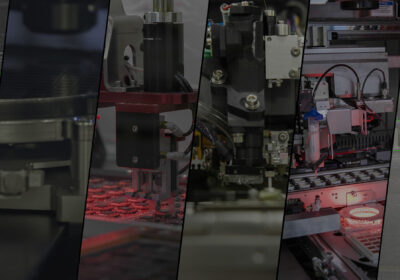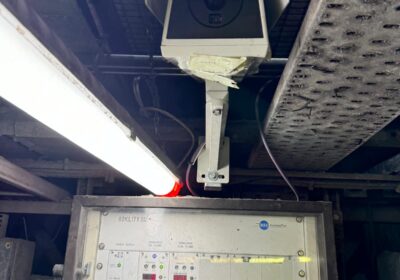From industrial sensors to advanced automotive systems, the demand for application-specific integrated circuits (ASICs) is accelerating. These custom chips support advanced sensing and connectivity, optimising system performance and enabling miniaturisation and system-level differentiation. But what exactly does the design process of an ASIC entail? Here, Ross Turnbull, Director of Business Development and Product Engineering at ASIC design and supply specialist Swindon Silicon Systems, explains.
ASICs are custom-designed semiconductor chips created to perform specific system functions. Unlike general-purpose processors, ASICs contain only the necessary circuitry for their task, resulting in a smaller die, lower power consumption, improved signal integrity and higher efficiency.
These capabilities are crucial for smart factories, where ASICs handle precise analogue-to-digital conversions and real-time processing in compact, low-power sensors. They’re also vital in advanced driver-assistance systems (ADAS) in vehicles, where ASICs rapidly combine data from radar, lidar and cameras to enhance automotive safety.
However, achieving this supreme level of customisation requires a structured development process — starting with clear design specifications.
Defining specifications
Designing an ASIC starts with analysing the target system, including identifying performance targets, power budgets, physical size constraints and interface needs.
Engineers will carry out feasibility studies to assess whether the project is technically and economically feasible. Architecture reviews are also conducted to explore various design approaches to achieve the optimal balance of power, speed and reliability. Any limitations, such as cost or environmental operating conditions, are also identified.
From this understanding, a detailed ASIC specification is then created to guide subsequent development phases.
From design to silicon
The development phase turns the concept into a physical chip. To do this, proven intellectual property (IP) blocks and standard cells from a foundry library are used to create custom designs to the specification of the design.
Corner simulations and thorough verification tests are run throughout this phase. These tests ensure the chip operates reliably across variations in temperature, voltage and manufacturing conditions, as well as identifying any potential issues before fabrication. To further validate chip functionality after fabrication, detailed test plans for wafer probing and automated test equipment (ATE) are also developed during this phase.
For the ASIC’s digital components, custom layout and logic synthesis can be used to arrange logic gates and optimise the physical placement of circuity, optimising chip size, minimising power consumption and ensuring accurate signal timing to meet strict performance requirements.

In Ultra Modern Electronic Manufacturing Factory Design Engineer in Sterile Coverall Holds Microchip with Gloves and Examines it.
Choosing packaging
Once verified and fabricated, the next step is to select the right package that meets the application’s mechanical, thermal and electrical demands.
Packaging is crucial as it protects the die, facilitates miniaturisation and enables seamless integration into the final system. It also ensures that the ASIC can operate reliably, whether that’s withstanding vibration in automotive settings, dissipating heat in compact electronics or preserving signal integrity in high-speed applications.
A range of packaging options are available to suit different application needs. Leadframe packages are well-suited to cost-sensitive or moderate-performance applications. However, for more complex, high-performance designs, leadless or laminate packages with high I/O density and improved thermal management are ideal. Wafer Level Chip Packaging (WLCSP) offers the smallest footprint and efficient board-level integration for ultra-compact or high-volume applications.

The final steps
After packaging, ASICs undergo rigorous production testing to ensure consistent performance and long-term reliability.
Using automated systems that collect real-time yield data, both tri-temperature and burn-in testing is conducted at the wafer and package levels. These testing procedures are carried out across all ASIC designs, including radio frequency (RF) for wireless communication, mixed-signal, digital and MEMS-based systems. Each test is supported by targeted yield improvement strategies, guaranteeing field failure rates of less than one part per million (PPM).
Beyond production, maintaining quality and availability throughout the ASIC’s lifecycle is critical. Real-time monitoring of yield, quality and delivery supports tight control and traceability. Obsolescence is also actively managed using long-life technologies and close collaboration with customers. If a component does become unavailable, redesign paths can be developed in advance to ensure continued production without disruption, preventing any device from becoming obsolete.
From initial specification to final production, ASIC development requires careful planning, technical precision, and long-term strategic support. Without the right approach, custom silicon solutions not only meet the needs of today’s systems but ensure performance, reliability and scalability well into the future.
Swindon Silicon Systems offers a full turnkey solution for ASIC production. Get in touch to find out how a custom ASIC could support your next project.








